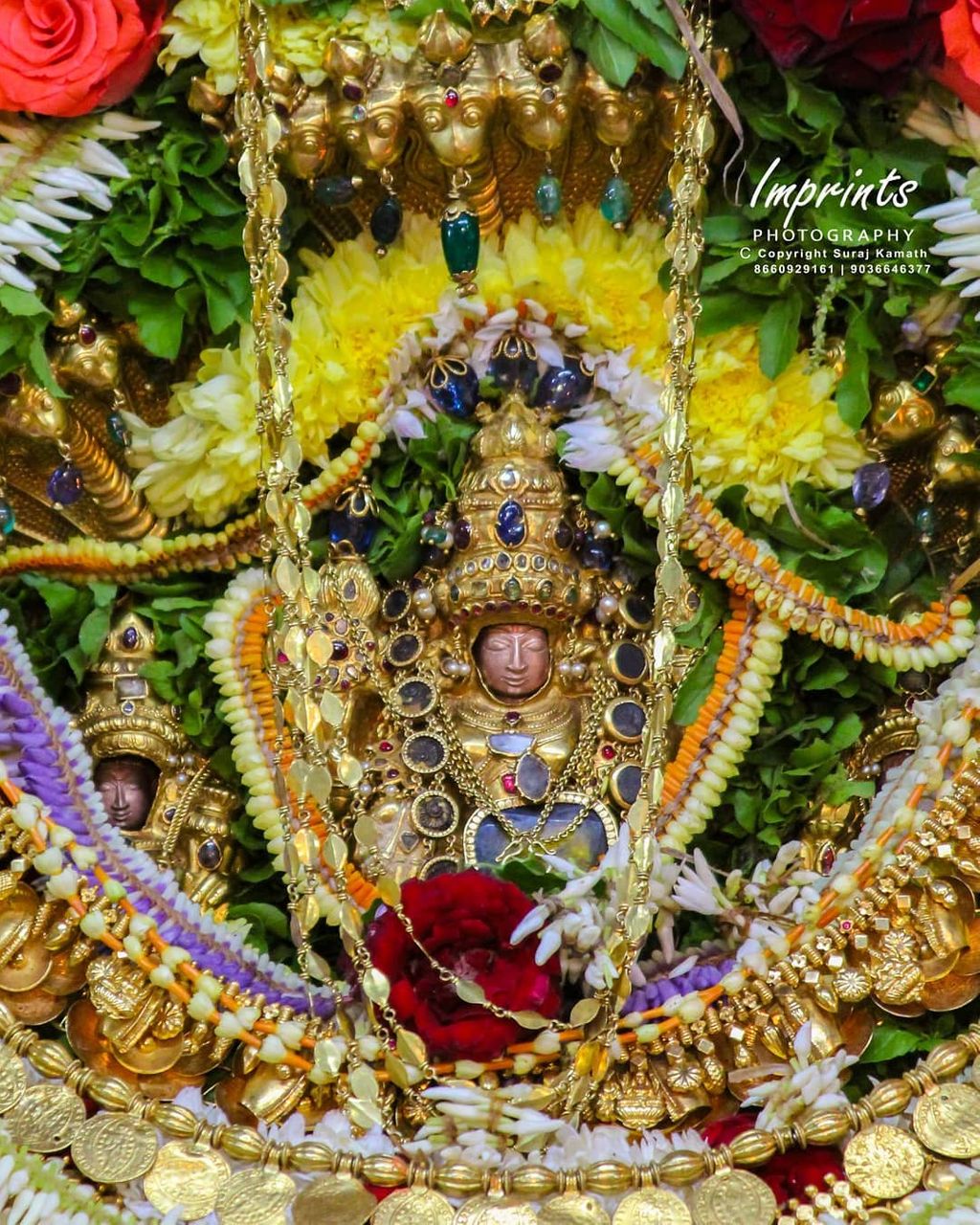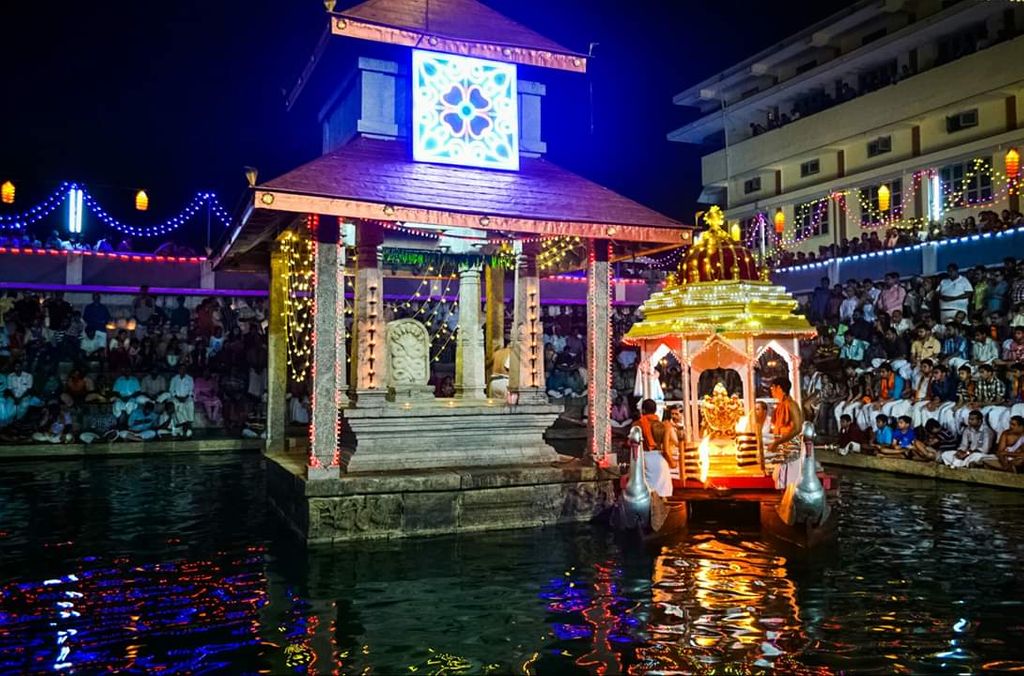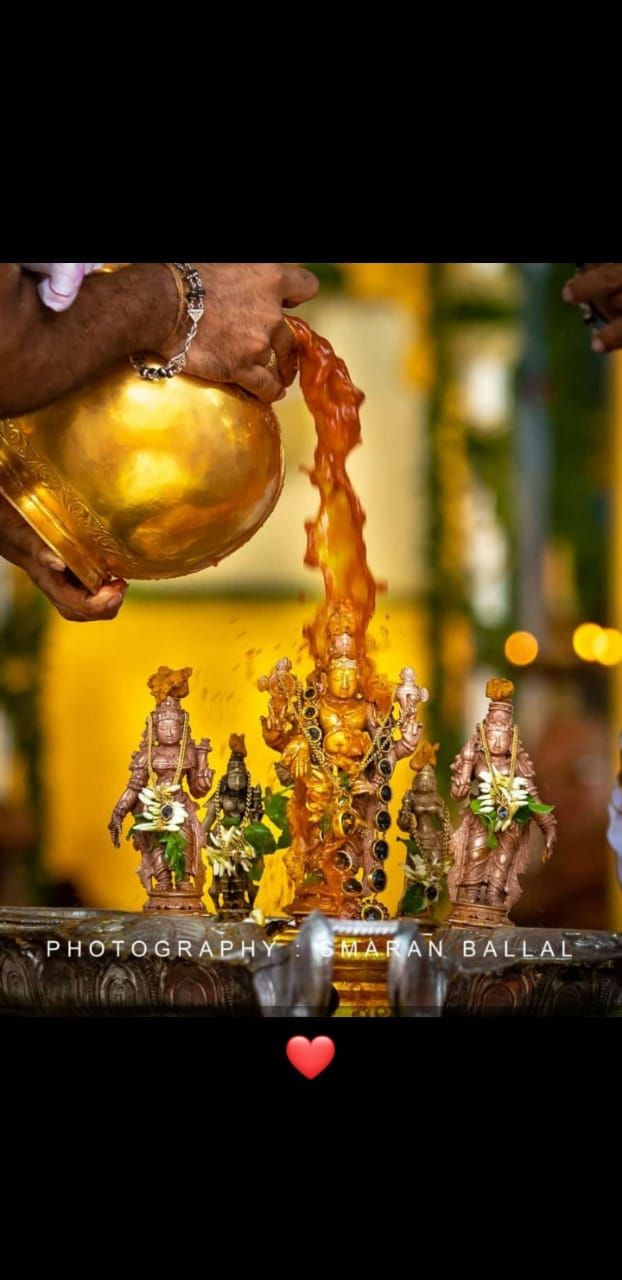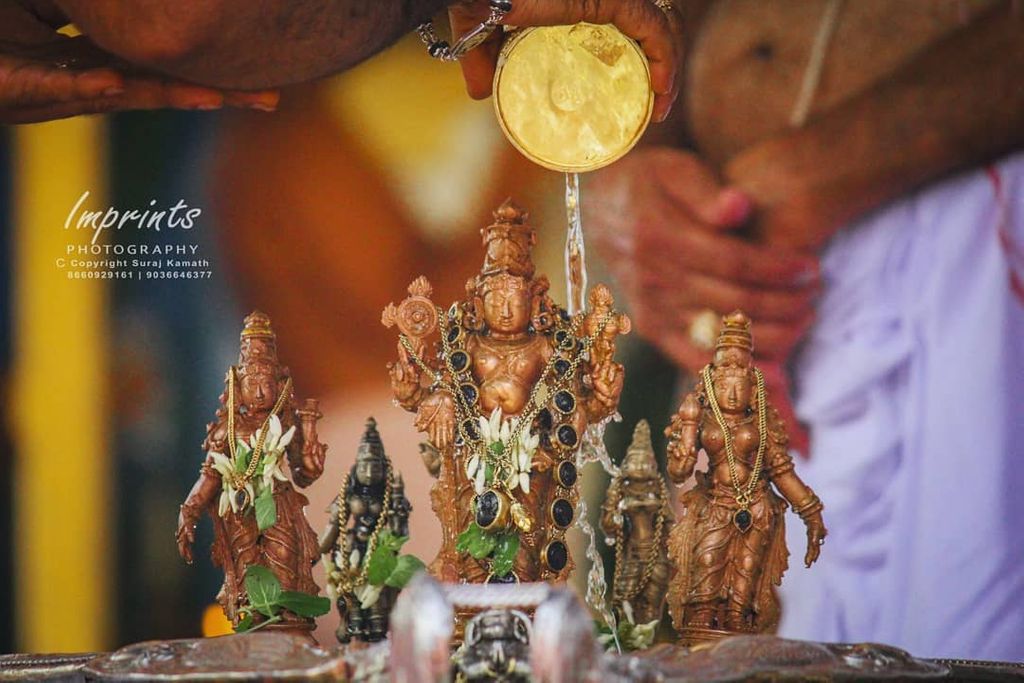Karthik Punnav
May 31, 2019 • 211 views
As written in the previous article, the Saint from Tirumala gave the idol to Karkala on one condition that the idol must be taken to Thirupathi once a year. But because that’s not possible, Lord Srinivasa is brought out only once in a year for Vanabhojana(feast in forest). This is Karthik Punnav. The basic idea is that Lord Srinivasa comes out only once a year and that’s the time when he is shown the whole town.

Kartik Punnav is celebrated in Karthik Maas(month) during November. It is a two day festival and the second most important festival in Karkala. Karkala Theru is about Lord Venkataramana and Karthik Punnav is about the feast for Lord Srinivasa. The celebrations start a month before the Karthik Punnav. People sing bhajans every evening while walking from Padutirupati temple to Padmavati temple for a month. This is called Nagarabhajane. On the day of Ekadashi, there is special bhajan called Ekkebhajane. On this day, mandalis (groups) from different towns come to sing bhajans that continue for 24 hours.
One day before Karthik Punnav, there is a custom called Talai divvo (Talai means holy pond and divvo means lamp). In the evening, the holy pond near the temple is filled with lit diyas and Lord Venkatramana is taken around the lake in a boat.Meanwhile, fireworks start.

Karthika Punnav starts with waking up Lord Srinivasa in the morning. This is done in a very interesting way. When the sun is right above the temple, the priest stands with a mirror right opposite to the temple. In this way, the sunlight reflects on the mirror and falls directly on Lord Srinivasa's idol, thus waking him up. This marks the start of Karthik Punnav. The idols of Lord Srinivasa and Lord Venkatraman, both are now brought out for procession. Lord Venkatraman is placed in a palanquin whereas Lord Srinivasa is placed in a golden mantap. The procession then starts from the temple to a place near Bhuvanendra College for Vanabhojana.
Men walk barefoot carrying the palaquin and mantap in a rhythmic manner so that the idols appear to be swaying beautifully. These volunteers are given food and drinks from the people of nearby houses. In this way, the Lord is shown the whole town. After reaching the destination (forest), the idols are removed from the palanquin and mantap and are bathed with milk, honey, turmeric water, etc. The pooja starts after which people are provided dinner. After everyone finishes dinner, the idols are placed back in the places and the journey back starts.

However, before reaching the temple, the procession stops midway at a place called Gopura, where the idols are removed from the palanquin and mantap and are placed one above the other. People come in lines to visit the idols as at this time, people will be able to have a clear view of the Lord’s idol from a very close distance. While this happens, Lord Srinivasa's golden mantap is sent back to the temple with Lord Hanuman’s idol in it (it’s not sent empty) and the chariot is brought to Gopura from the Temple. The idols then get back to the temple, while Lord Venkatraman's idol stops midway many times and is placed in small chariots called Kurindhu. These chariots belong to several families and this shows that the Lord has visited every family. By the time the idols reach back to the temple, it becomes 4 or 5 in the morning. That marks the end of day 1.
The day 2 starts just few hours after the day 1. It starts with waking up the Lord by singing Suprabhat. That evening, Okuli starts. It’s the same as Okuli for Theru but this time there are two idols. The idols are placed face to face in a huge palanquin and are taken to Ramasamudra for Okuli. There both the idols are bathed while others play Okuli with turmeric water. The palanquin with both the idols comes back to the temple as people throw flattended puff rice on the palanquin making it look as if the palanquin is beautifully covered in snow. There is dinner in the evening and a final pooja of the day for both the Lords.This marks the end of Karthik Punnav.

